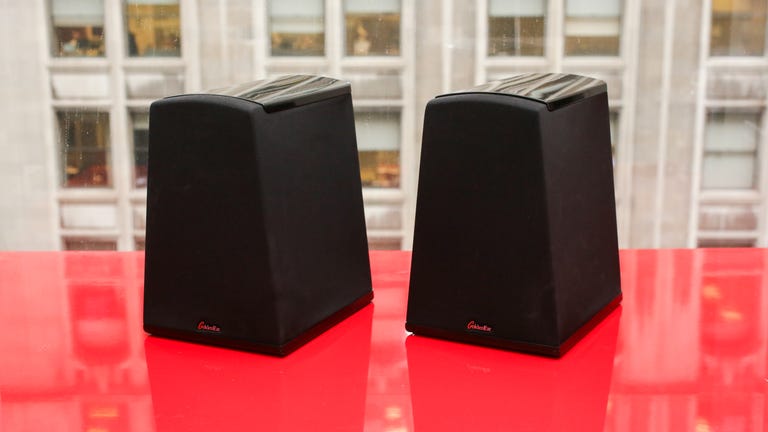 Why You Can Trust CNET
Why You Can Trust CNET GoldenEar Technology Aon 2 review: These bookshelf speakers roll, but can't rock
The GoldenEar Technology Aon 2 bookshelf speaker offers soundstages that would give John Williams the chills, but it's no rock-and-roll brawler.
If you have limited space in your living area, a set of bookshelf speakers makes good sense. They're able to be mounted on top of existing furniture -- such as an eponymous bookshelf or, better yet, an AV unit. That's exactly the sort of environment where models such as the GoldenEar Technology Aon 2s are designed to shine.
The Good
The Bad
The Bottom Line
Originally conceived as professional near-field monitors -- the type of speakers you'd find in a recording studio -- the Aon 2s preceded the larger, well-received Aon 3 and offer a more affordable price ($799 versus $999). Despite their control room origins, GoldenEar is selling the Aons as consumer speakers.
Golden Ear's sleek new Aon 2 speakers are beautifully designed.
The Aon 2s are quite unobtrusive to behold, as they are bound almost entirely in acoustically transparent material -- only a piano-black plastic cap and wooden base alert you that there's a physical speaker in there. The unique truncated pyramid design is said to reduce pesky internal standing waves.
Though the grille "sock" is not removable -- you can only cinch it down -- underneath it lies a "folded ribbon" tweeter and a 6-inch cast frame bass/midrange driver. Instead of the traditional bass ports there are twin, 6.5-inch planar low-frequency radiators mounted on the speaker's side panels.
The speakers are rated at up to 200W per channel and the passive bass drivers help them reach down to a claimed 42Hz. Meanwhile the tweeters can reach up to a dog-bothering 35kHz.
Despite the provision of the passive bass drivers, the Aon 2 isn't as capable with bottom end as the larger Aon 3 -- a model that our own Audiophiliac Steve Guttenberg prefers. If you listen to choral, orchestral, jazz or acoustic music, the Aons are for you. The speakers themselves completely disappear and offer a wide soundstage in which individual elements are tantalizingly imaged.
As a near-field design the imaging and presence of the speakers increases the closer you get to them. Wilco's new album, "Star Wars," lacked a little oomph at a couch-friendly 8 feet but Tweedy's voice really opened up as we got off the couch and sat cross-legged on the floor.
"Yulunga" by Dead Can Dance was surprisingly mesmerizing when played through the Aon 2s. Though inspired by Australian Aboriginal dance, the track oozes Middle Eastern mysticism, beginning with a slow chant backed with a nasally wind instrument then building to shakers and booming drums. It's a powerful piece and the GoldenEars were able to bring the listener closer to the players than the more polite Pioneer SPEB73-LR. The Pioneer was able to convey the bass hits with more authority, though if its transparency you seek the Aons are better.
What the Aon 2 can't do is rock music (and by extension dance or urban) as the sound starts to physically break up under the influence of bass. When subjected to "Another Brick In the Wall" the GoldenEars held on as well as they could but the sound started to crumble and harden toward the end of the track as the extended solo played.
Depending on the size of your room and your amplification you may need a subwoofer, and if you're able to select a crossover you can probably reduce the negative effects of bass on the overall sound quality.
No rock-and-roll brawler
When it comes to a stereo image, the Aon 2 has one of the best I've heard for anywhere near the money. You would need to spend thousands of dollars to get something this good. But -- and this is a huge but -- these speakers just can't perform with heavier styles of music. This is fine if you're a stereotypical audiophile type, but if your tastes run to "pretty much everything" then the Aon 2s will probably quickly disappoint.
If, like me, you're looking for an all-rounder, I'd suggest looking at Pioneer's excellent SPEB73. Or just wait for the upcoming ELAC Uni-Fi UB5s instead.


